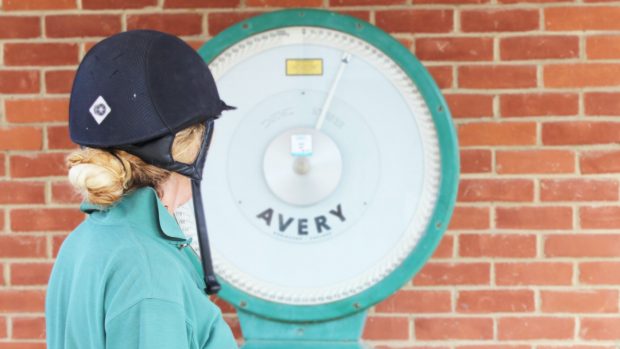State-of-the-art technology and one of the oldest methods of healing known to man are being combined to notable effect by a Surrey-based American vet to help horses suffering from back pain.
Dietrich von Schweinitz, who has successfully treated many top horses including Pippa Funnell’s Supreme Rock, uses infrared thermographic scanning as a diagnostic tool, backed up by a range of treatments involving both conventional and alternative therapies, particularly his speciality, acupuncture.
Bad backs
As many of us know, having a “bad back” can cause much distress.A horse suffering pain or discomfort “talks” through behaviour or movement.
His language can range from over-sensitivity to being groomed or saddled, to bucking or other violent behaviour when being ridden.
He can show varying degrees of lameness without obvious cause, stilted or uneven action or postural faults, or reluctance to co-operate in athletic endeavour.
Thermography
the manifestation of problems in the horse often emanates from the spine. The sympathetic nervous system is part of the autonomic (control) system that governs the processes such as blood flow responses to muscular activity and body surface heat.
This is a vital part of the whole nervous system and a major component of the spinal cord. It undergoes extensive interaction with other nerves, including those transmitting sensations and motor control.
Thermography – plotting a temperature map of the body – shows up abnormalities and, again in common with well-documented human cases, pain does not necessarily have its source in areas of increased temperature, the obvious “hot spots” which might indicate inflammation.
“Cold areas”, where blood flow is restricted, are as – if not more – relevant in the search for a reason for chronic pain. The key is to identify variations in temperature from the norm.
At Dietrich’s clinic, the focus is on horses with poor performance syndromes, back and neck pain, chronic lameness and locomotor complaints, all of varying degrees of subtlety.
His patients are largely competition horses, particularly prone to neuromuscular and musculoskeletal faults. Rehabilitation treatment and services are not restricted to acupuncture; there aremost modern facilities practice, but the emphasis is on a holistic approach.
Thermographic scanning – an easy, non-invasive procedure -gives an overview of the horse’s physiological status and assists in plotting the sympathetic nervous system’s responses to acupuncture and other therapies.
Nervous system
It is one of Dietrich’s regrets that more attention is not given to neuro-physiology (working of the nervous system) in veterinary training.
“There is tremendous integration of the nerves involved in the micro-trauma of a needle insertion, because of where it is happening. The acupuncture points, all over the body, are slight hollows – you can feel them, for example, along the meridian which runs onboth sides of the spine on the edge of the longissimus muscle.
“They also frequently happen to be sites where neurovascular bundles [bundles of nerves and blood vessels] come out from the deeper tissue to innervate that area.”




